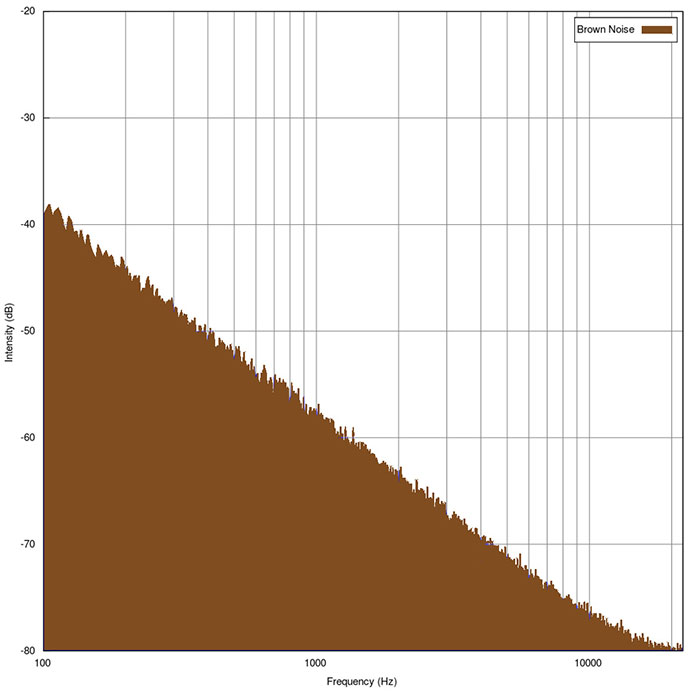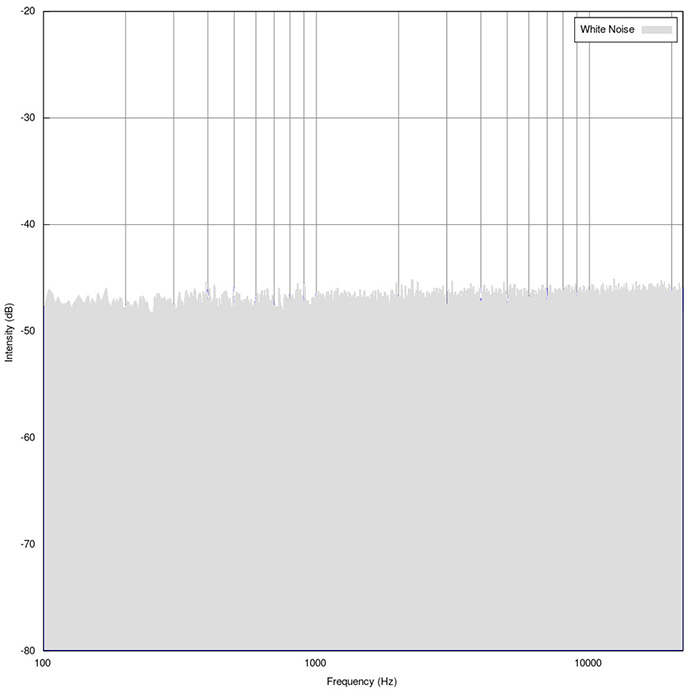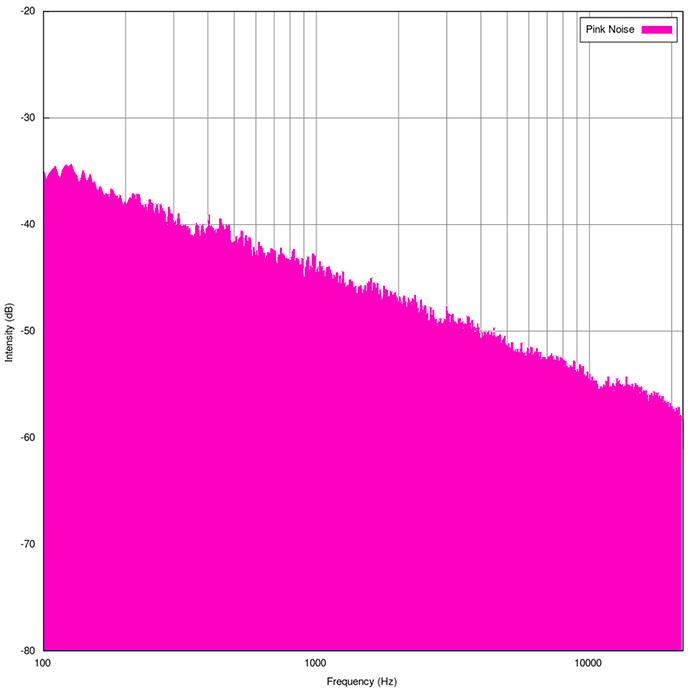Sound and Color
Regis professor studies whether brown noise can calm unquiet minds
In video after video, TikTok users record themselves listening to a continuous ocean-like sound. Most look into the camera as they listen, grin, and reach the same conclusion: their mind is quiet. Distracting thoughts vanish. Focusing becomes easier. For some, it’s the first time they’ve ever been able to silence the constant noise in their minds.
Videos about brown noise, viewed more than 113 million times on the video-sharing app since last summer, kicked off a phenomenon for thousands of users who have come to swear by the sound for its calming effects and potential to ease ADHD symptoms.

But does brown noise really work? Since last fall, Dan Berlau, Regis professor of pharmaceutical sciences, has been asked that question by journalists from across the country. His answers have appeared in the Washington Post, the New York Times, The Guardian US, and even the beauty-product magazine Allure. Each time, his answer is: It’s complicated.
In 2018, Berlau and a student studied the effects of white noise, the older, more popular cousin of brown noise. They found convincing evidence that white noise can help ease symptoms of ADHD, including problems with impulsivity and focus. The results were published in the peer-reviewed journal Complementary Therapies in Medicine. But their research didn’t exactly hit the mainstream.
“No one mentioned it or talked to us about it at all,” Berlau said. “I thought it was interesting, but it just sort of didn't find an audience.”
Not until summer 2022, when brown noise went viral on TikTok. Brown noise, which sounds like the inside of an airplane, the ocean or wind, isn’t the only colorful sound that has caught the attention of the online masses. Other varieties include pink, gray and violet noise, which all vary in frequency — or how pleasant they sound to the human ear.
“Out of the blue, I started getting calls,” Berlau said. “If you Googled ‘brown noise ADHD,’ the only thing that came up is my paper about white noise and ADHD. And so, I guess we were lucky enough to be one of the people who sort of talked about this a while ago.”
Berlau said the viral TikToks have generated plenty of interest about the science of the different variations of noise. So, how does it work?
The science — and mystery — of noise
People who have ADHD have an imbalance in the way dopamine is released in their brains throughout the day, Berlau said.
In the same Washington Post article that featured Berlau, researcher Göran Söderland, of Western Norway University of Applied Sciences, explained that in some people with ADHD, neuron signals in the brain are like fireworks exploding in all directions causing a “noisy” head with chaotic thoughts competing for attention.
ADHD medications, Berlau said, allow brains to slowly release dopamine, mimicking the activity of neurotypical brains, which release small amounts of dopamine throughout the day. This steady drip allows people to focus and prevents hyperactivity.

“The thought is that brown noise — because it's a sort of blanket stimulating event — may be able to mimic in some way that tonic release of dopamine, the dopamine trickle,” Berlau said.
Not much research has been completed on brown noise specifically. In studies about white noise, however, researchers found that when people with ADHD listened to white noise, their dopamine levels didn’t change — “so it’s not making dopamine be released,” Berlau said. But, somehow, the noise mimics the stimulating effect that helps people focus.
“The best theory is that there's this general level of arousal that needs to take place in your brain to sort of have optimal functioning,” Berlau said. “And brown noise and white noise help people's brains get to that optimal level.”
At the time Berlau was studying noise, the most popular variations were white, brown and pink noise, though more varieties have since become popular. White, brown and pink noise are all known as broadband sounds because they contain many frequencies that humans can hear. White noise includes all frequencies that humans can hear at the same level. Examples of white noise include electric fans, an air conditioner’s hum or radio static.
Pink noise, which includes nature sounds like waterfalls, wind or waves, is a softer version of white noise. It plays low frequencies louder than high frequencies.
Brown noise gets its name from Scottish botanist Robert Brown who discovered “Brownian motion,” — the way pollen grains seem to dance when suspended in motion. Some say brown noise mimics that random movement. Brown noise contains all frequencies but turns up the lower frequencies and softens the higher frequencies.
Human ears hear high-pitched noises louder than lower-pitched sounds. So even though white noise plays all the frequencies ears can hear at the same level, people hear the higher pitched noises the loudest, Berlau said. Pink and brown noise, on the other hand, turn down the volume on the higher pitched sounds to adjust for the way ears perceive sound, resulting in sounds that are more pleasant for some.

The benefits of distinct types of sound have become clear to many listeners over the past year. Berlau, like a growing number of people, said he uses pink noise to sleep because the masking effect of noise helps drown out other sounds. When his son was born, Berlau used a noise machine to help him sleep. It wasn’t long before the entire family became accustomed to the soothing sounds of pink noise. Some people use brown noise when they try to focus on a task in a coffee shop. Many use it in the workplace.
And for people with ADHD, different types of noise may help treat symptoms, especially as a shortage of Adderall, an ADHD medication, has persisted throughout the fall and winter.
“The neat thing about brown noise is that you can very quickly make it louder or softer, you can listen to it in one context or the other,” Berlau said. “You can try pink noise or some brown noise. And all of these interventions are safe and mostly free, as opposed to medications where you can't just switch things around like that.”
Berlau said he does not advocate replacing traditional treatments and medications with brown noise. But he added that brown noise may be an effective supplement, as long as users listen to the noise at a safe volume. “The risks are pretty low, and the benefits are not that bad either,” he said.
Although Berlau and colleagues have found convincing evidence that white noise can ease ADHD symptoms, the science of brown noise remains understudied. He anticipates that the viral trend of brown noise will prompt more research.
For Berlau, though, his next research projects will be guided by his students, continuing work that he began when he started at Regis. Berlau’s interest in white noise was prompted by a student who wanted to learn more.
Students as first author
Berlau, who earned his Ph.D. in neuroscience from the University of California Irvine, said that a friend approached him about a new pharmacy program starting at Regis in 2011. After completing his studies in neuroscience, he wasn’t necessarily thinking about teaching pharmacy. But then, he visited Regis.
“Once I came here, and saw our team-based learning, I was sold,” Berlau said. “I saw a team-based learning class and I was like, 100 percent, this is what I want to do for my career. And I don't regret that for a second.”
Since 2011, Berlau has tackled research with students, including investigating the status of muscular dystrophy drugs in the United States and analyzing whether marijuana could be an effective substitute for opioids in pain management. When a student approached him about studying white noise in 2018, he agreed. Once their work is published, he lists the student as first author.
While brown noise went viral on TikTok and dominated a news cycle during the fall, Berlau and his students have worked on other frequently cited projects. In 2018, he published a paper about how statins — medications for high cholesterol — may impact dementia. A small percentage of people who take statins experience delirium, or temporary dementia, until they stop taking the medication, Berlau said. For other people, though, statins decrease the likelihood that they will develop dementia. The paper explored how both effects could be possible. Since the research was published, the paper has been widely cited by other researchers.
Until the next TikTok trend, Berlau plans to keep assisting students with research, giving them a chance to contribute to the field.
“Since I've come to Regis, what I have really focused on is engaging students in writing papers and doing research on topics that they're interested in and contributing to the literature in some meaningful way.”